Executive Summary
Macro
- Most commodities have fallen to long-term historical trends
- Cattle is correcting but remains well above long-term historical trends
Fundamentals
- Feedlots are responding to high prices
- Ranchers are bidding for feeder cattle to place in lots
- Ranchers are holding back live cattle from auctions to maintain price
- Competing proteins are getting cheaper
- Hog prices are plummeting as PEDV fears abate
- Broiler supply is rising
Technicals
- Cattle prices are forming a trend of lower highs / lower lows
- There have been selloffs on bullish data
Intro to Cattle Trading
There are two futures on cattle
1. Feeder Cattle
- Ready for feedlot
- 6-10 months old (750 lbs steer/heifer)
- Symbol: GF (Globex) / FC (CME)
- Less liquid
2. Live Cattle
- Ready for slaughter
- After 5 months on feedlot (1250 lbs)
- Symbol: LE (Globex) / LC (CME)
- More liquid
Important Data Points
- USDA "Cattle on Feed" Report
- World Agricultural Supply and Demand Estimates (WASDE) Report
LE Specifications
| Contract Size | 40,000 pounds |
| Product Description | 55% Choice, 45% Select Yield Grade 3 live steers |
| Pricing Unit | Cents per pound |
| Tick Size | $0.00025 per pound ($10 per contract) |
| Daily Limits | $0.030 per pound expandable to $0.045 |
| Trading Hours | M 9:05 AM - 4:00 PM CT T - Th 8:00 AM - 4:00 PM CT F 8:00 AM - 1:55 PM CT |
| Initial Margin / Maintenance Margin |
$2338 / $1870 |
Bull Case
Demand
- Commodity supercycle from global growth
- Rising world wealth ➙ more protein consumption
- Recovering US economy supports high beef prices
Supply
- Climate risk: Droughts ➙ less beef
- 2011 Texas and Oklahoma drought led to big spike in prices
- Current California drought supports prices
Commodity prices are falling
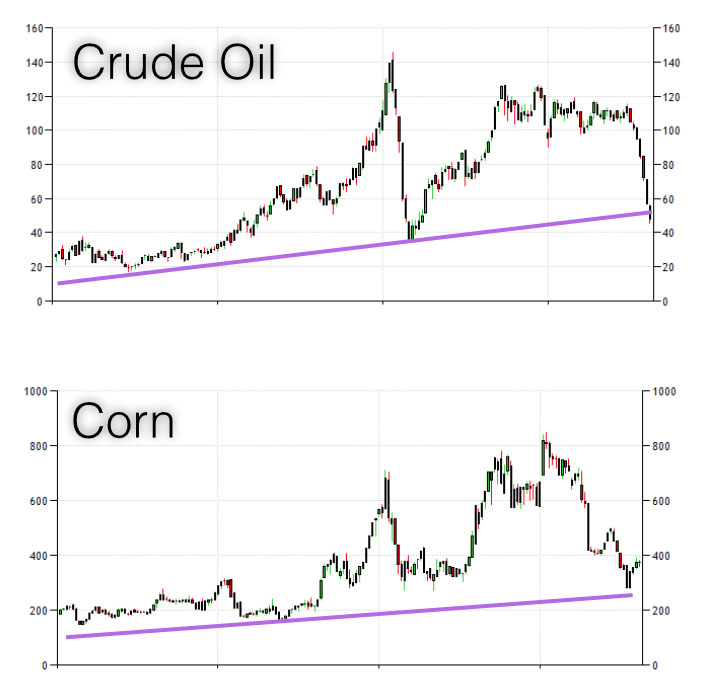
Reasons
- Supplier response to high prices is to produce more
- Strong US Dollar decreases price in dollars
- Lower inflation expectations reduces demand as hedge
Return to historic trends?
- Perhaps this is the end of the commodity supercycle and prices simply revert to historical norms

Live cattle last to fall?
- LE prices peaked at 171.10 in November 2014
- LE prices are trading around 150 now
- Historical range is 70-95
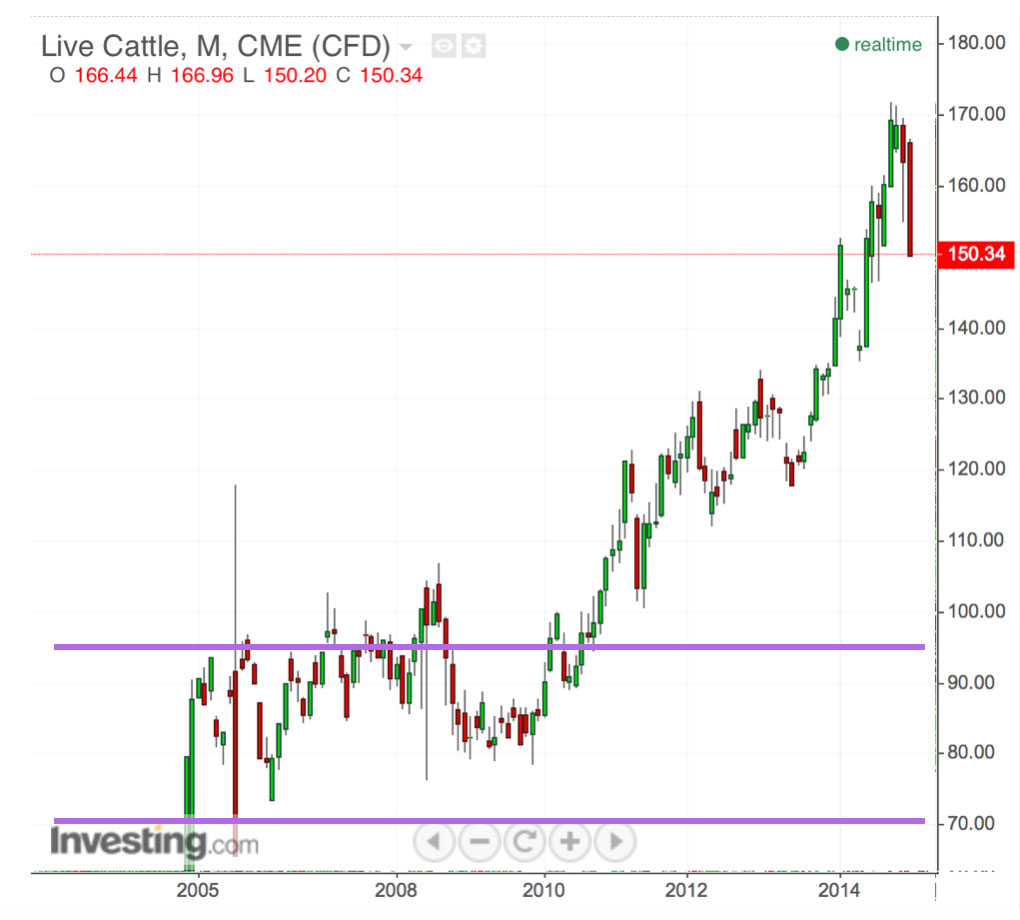
Supply
Other commodities rose in price because production growth was constrained by physical limitations imposed by the Earth. The US cattle herd actually declined over the past 12 years from culling.
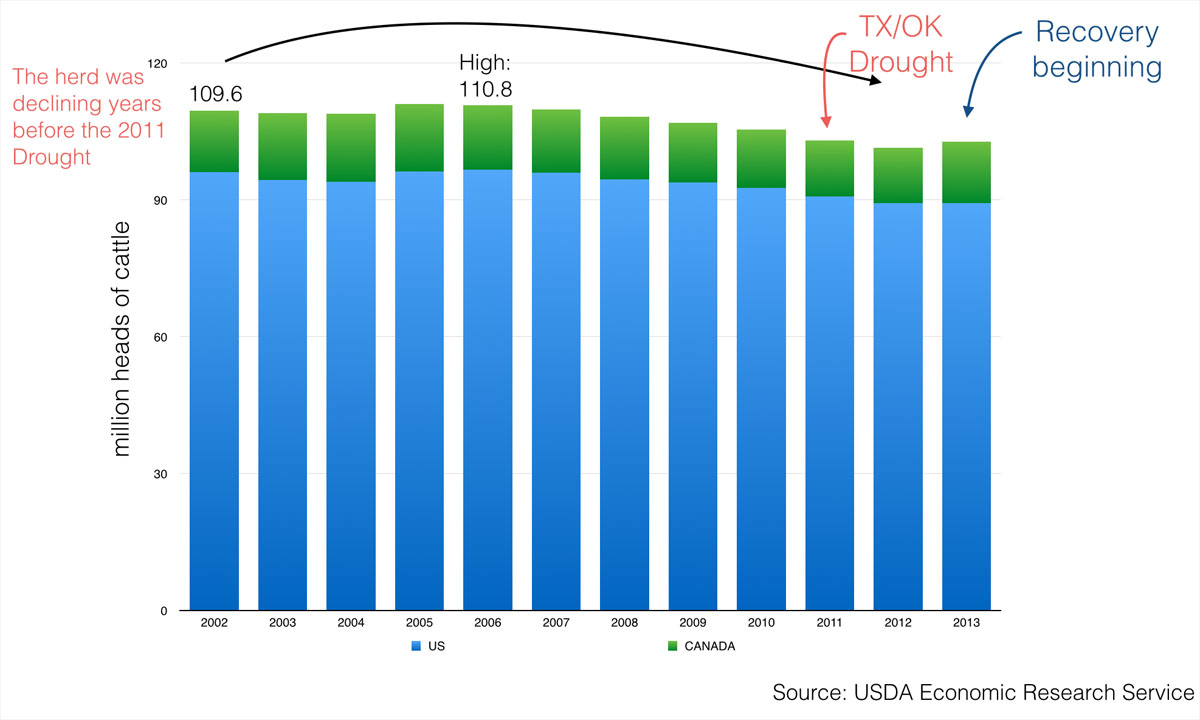
Market indicates more supply is coming
Backwardated Futures Curve
Live cattle prices in the future are lower than spot prices
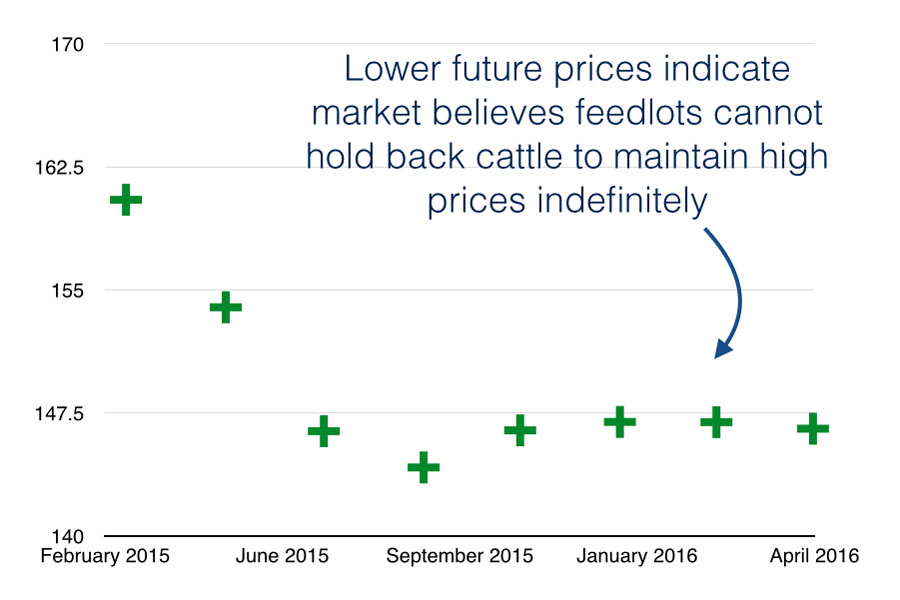
Typically indicates near-term shortage, but there’s no real shortage: feedlots are holding back cattle to keep prices high. Cash trade volume is low. Spot prices (low-160s) have been dragging near-dated contracts up recently.
Flat Futures Curve
Feeder cattle prices in the future are close to spot prices

Feeder prices have risen together. Feedlots have been trying to place more cattle and market indicates demand will be consistent.
Recent Bearish Factors
- US cattle on feed: ⬆︎1% yoy
- US Herd: 10.7 million head (1/1/2015)
- 6.94 million steers ⬆︎2% yoy
- 3.67 million heifers ⬇︎2% yoy
Recent Bullish Factors
- Placements: 1.54M ⬇︎8% from Dec ’13
- Marketings: 1.66M ⬇︎5% from Dec ’13
- Slaughter YTD: 3.46M ⬇︎7.4% yoy
Demand
Domestic consumption of US beef has fallen while exports have risen. In aggregate, demand for US beef has fallen in the past 12 years.

The Competition

Lean hog prices have fallen
- Hog prices skyrocketed in 2014 due to PEDV fears
- PEDV was more hype than lethal
- Hog prices have fallen from upper-90s to mid-60s

Broiler supply rising
- 206 million eggs set in incubators ⬆︎3.3% yoy
- 169 million chicks placed ⬆︎2.8% yoy
- Ready to cook weight ⬆︎3.5% yoy
Beef inflation has outpaced pork and chicken inflation over the past decade.
The premium to buy beef at retail is the widest in recent history.
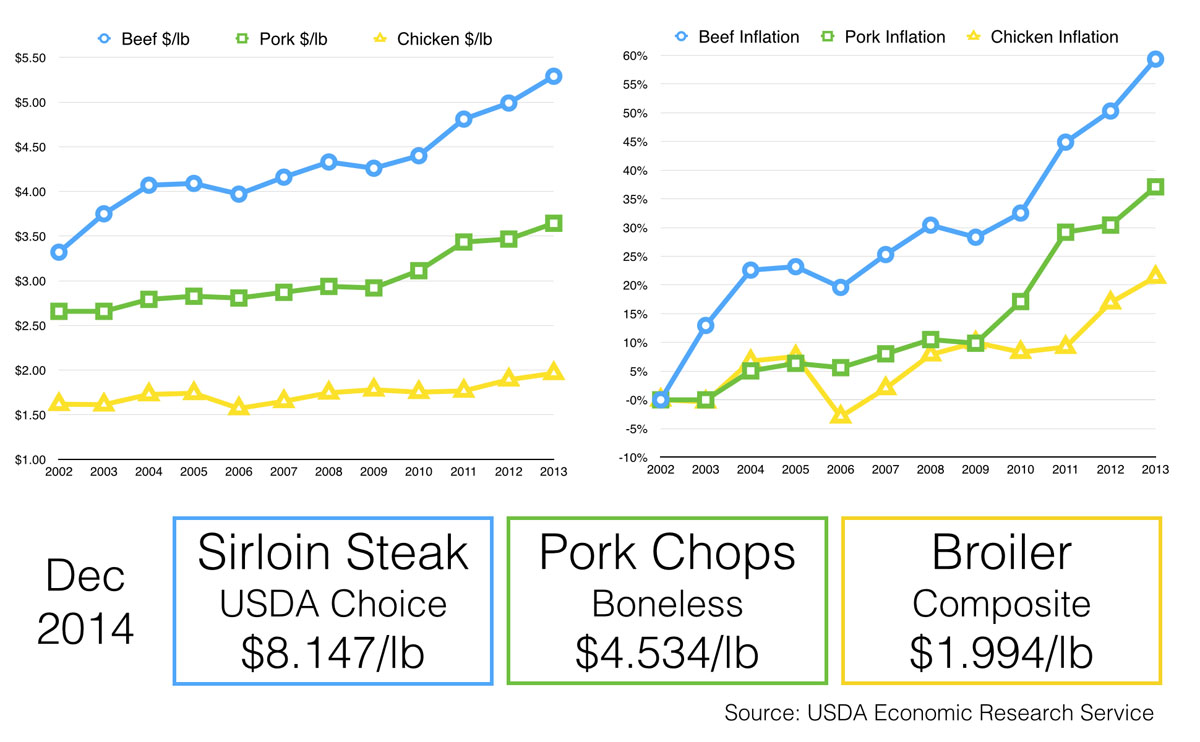
Risk to Thesis
- If Bovine Spongiform Encephalopathy (BSE) or “Mad Cow Disease” emerges in foreign beef, then prices of domestic beef would increase
- If there is drought or extreme temperatures
- Increases cost of feed / less grass
- Hot weather: cattle consume less food
- Cold weather: cattle burn more calories
- If a disease kills cattle but does not affect humans (decrease supply but no effect on demand)
- If beef consumption increases in the American diet